Discover all the currencies that Brazil has ever had! Banknotes and coins are an integral part of our daily lives, and often we use them without paying attention to their history or unique features. In Brazil, over the years, several banknotes and coins have been minted, each with its own history and fascinating details. In this text, embark on a fascinating journey to uncover the secrets and interesting details about the currency used in Brazil throughout time.
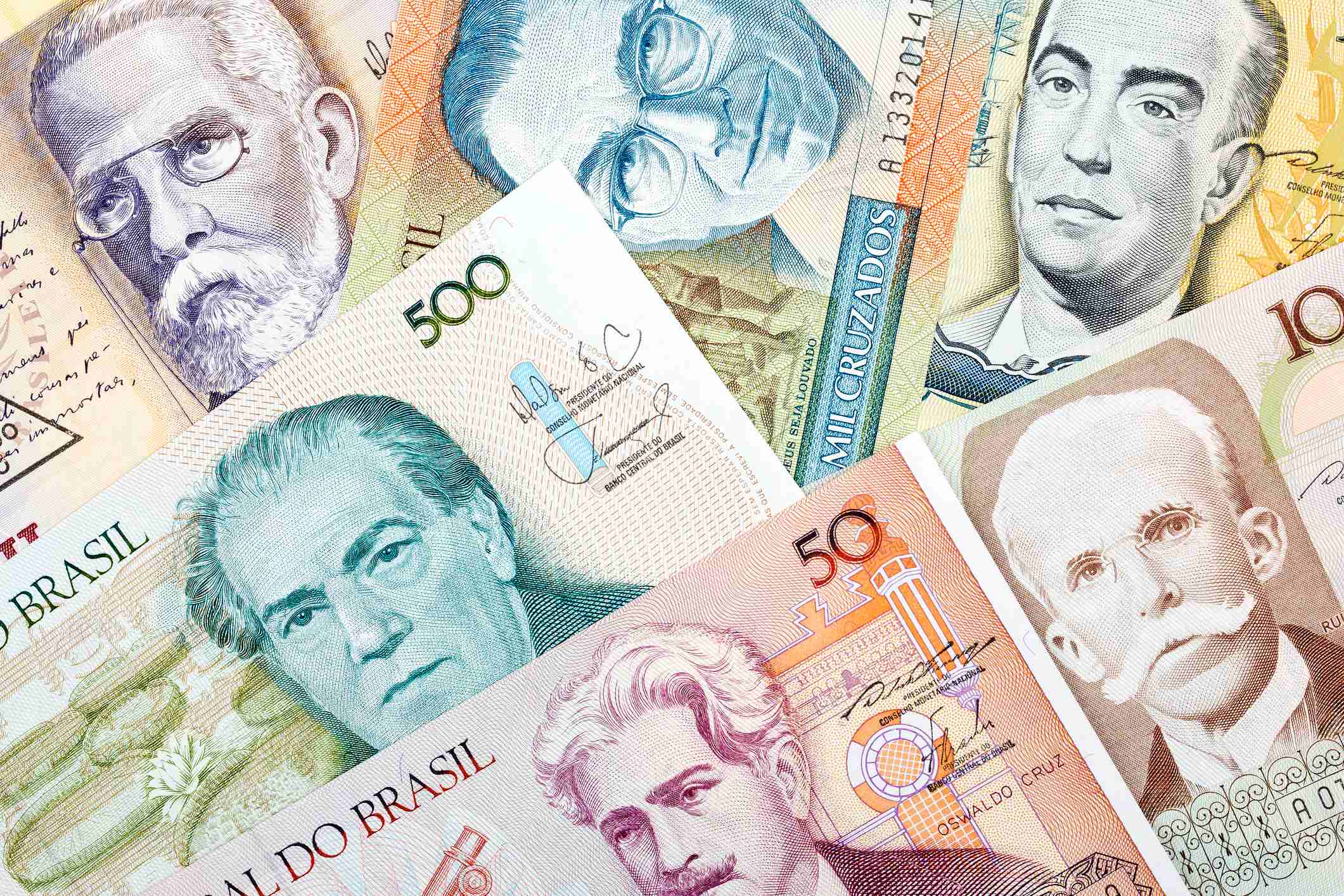
RÉIS (1575-1889)
The name “réis” comes from “real,” the currency used by Portugal in the early days of colonization. Officially, the Portuguese currency began to circulate in Brazil in 1568. The first time “réis” was used in a document was in 1575, although the currency was only officially established in 1645. From then on, the Brazilian currency came to be called “réis.” During the period of the Brazilian Empire, the banknotes and coins of “réis” were at the heart of the country’s monetary system. These tangible elements of our history have unique characteristics, representative symbols, and invaluable cultural richness.
Throughout the Brazilian Empire, “réis” banknotes were issued in different denominations, reflecting the need for a paper currency to complement metallic coins. These banknotes featured symbols and representative elements of the monarchy, such as the imperial coat of arms, portraits of reigning monarchs, and historical or allegorical scenes. “Réis” banknotes were used in commercial and financial transactions, and each one had its printed value, allowing for the circulation of larger amounts of money.

Both the banknotes and coins of “réis” were adorned with symbols that reflected the identity of the Brazilian Empire. Among the present elements, portraits of monarchs such as Dom Pedro I and Dom Pedro II stood out, as well as allegorical figures representing liberty, justice, agriculture, and industry, in addition to symbols of nobility and imperial power. These symbols expressed the values and history of the time, making each banknote and coin a unique and valuable piece.
CRUZEIRO (1942-1967)
In 1942, Brazil underwent a significant change in its monetary system with the adoption of the “Cruzeiro” as the new currency. The banknotes and coins of the “Cruzeiro” became essential elements in the country’s economy, reflecting not only their financial value but also the historical context of the time. The adoption of the “Cruzeiro” as the new currency in 1942 took place during a period of economic instability and inflation. The main objective was to simplify the monetary system, stabilize prices, and boost the country’s economy. The name “Cruzeiro” was chosen in reference to the Southern Cross constellation, an important national symbol.

In addition to banknotes, coins of the “Cruzeiro” were also minted. The lower-value coins, such as the 1, 5, 10, and 20 cents, were made of bronze or cupronickel, while the higher-value coins, like the 50 cents and 1 “Cruzeiro,” were produced in silver. The “Cruzeiro” coins featured national symbols, such as the coat of arms of Brazil and the effigy of the Republic.
CRUZEIRO NOVO (1967-1970)
Amidst a scenario of inflation and economic imbalance, Brazil underwent a significant monetary reform in 1967, resulting in the creation of the “Cruzeiro Novo.” This change directly impacted the banknotes and coins in circulation, bringing forth new values and designs. The “Cruzeiro Novo” was introduced in 1967 as a response to the escalating inflation and the need to stabilize the Brazilian economy. Replacing the old “Cruzeiro,” this new currency aimed to simplify the monetary system and combat the devaluation of the national currency. The shift to the “Cruzeiro Novo” occurred during a period of development and modernization in Brazil.

The banknotes of the “Cruzeiro Novo” featured a new design, with elements that reflected the national identity and history of the country. The banknotes were printed in various denominations, such as 1, 2, 5, 10, 50, 100, and 500 “Cruzeiros Novos.” The designs on the banknotes depicted Brazilian personalities, landscapes, historical monuments, and national symbols, creating a unique visual identity for the new currency.
CRUZEIRO (1970-1986)
The banknotes and coins of the 1970 “Cruzeiro” in Brazil represent an important chapter in the country’s monetary history. During that time, Brazil was experiencing a period of economic instability and significant political changes. The “Cruzeiro” was the official currency of the country between 1942 and 1986, and in 1970, it underwent a monetary reform that resulted in the issuance of new banknotes and coins. The 1970 “Cruzeiro” banknotes featured a variety of denominations, with different sizes and colors to facilitate identification.
The higher-value notes were represented by historical figures, such as the Cr$ 10,000.00 note with the image of Carlos Gomes, the renowned Brazilian composer, and the Cr$ 5,000.00 note with the figure of Machado de Assis, one of the country’s greatest writers. The lower-value notes featured illustrations of animals, such as the Cr$ 1,000.00 note with the image of a toucan.

Although the 1970 “Cruzeiro” banknotes and coins were widely used at the time, the increasing inflation and economic instability in the country eventually devalued the currency over the years. As a result, Brazil underwent several monetary reforms in the following decades, culminating in the replacement of the “Cruzeiro” with the “Cruzado” in 1986.
CRUZADO (1986-1989)
The banknotes and coins of the “Cruzado” were introduced in Brazil in 1986 as part of an economic plan to combat the inflation that plagued the country at the time. The “Cruzado” was a new currency implemented as a result of the “Cruzado Plan” launched by the Brazilian government on February 28, 1986. Prior to the “Cruzado,” Brazil was experiencing a period of hyperinflation with extremely high inflation rates. The Brazilian economy was destabilized, prices were rising uncontrollably, and the purchasing power of the currency was severely compromised. The government saw the need to take drastic measures to reverse this situation and restore confidence in the economy.

The banknotes of the “Cruzado” were issued in different denominations: 10, 50, 100, 500, and 1,000 cruzados. Each note featured a unique design, depicting historical figures, landscapes, or cultural aspects of Brazil. The banknotes also included elements such as the signature of the president of the Central Bank at the time and the country’s coat of arms. The Cruzado Plan, along with the introduction of the new banknotes and coins, initially succeeded in controlling inflation in Brazil. However, the plan proved to be unsustainable in the long run, and inflation worsened again in the following years. This led to the replacement of the “Cruzado” banknotes and coins with the “Cruzado Novo” in 1989.
CRUZADO NOVO (1989-1990)
The banknotes and coins of the “Cruzado Novo” in Brazil, issued in 1989, represent an important period in the country’s economic history. The “Cruzado Novo” was a Brazilian currency created to replace the “Cruzado” as part of the Plano Verão (Summer Plan), an economic plan implemented by the government to combat rampant inflation that plagued the nation at the time. Prior to the “Cruzado Novo,” Brazil faced skyrocketing inflation that undermined economic stability and the purchasing power of the population. In search of a solution, the government launched the Plano Verão in January 1989, which included a change in the national currency. The “Cruzado Novo” was introduced as a new monetary unit, replacing the “Cruzado” at a ratio of 1,000 to 1.
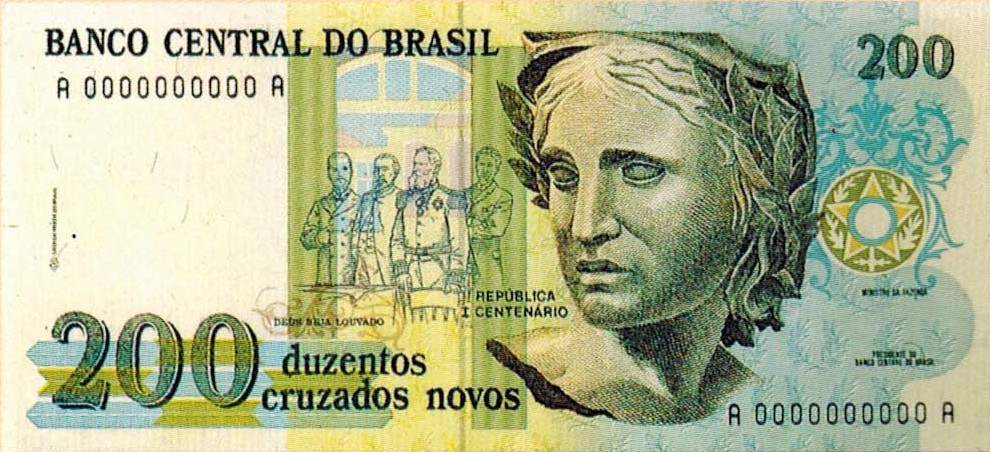
However, despite efforts to stabilize the economy, the “Cruzado Novo” failed to solve Brazil’s inflation problems. Hyperinflation persisted, and subsequently, in March 1990, the currency was replaced by the “Cruzeiro” – yes, the Cruzeiro made a comeback in another attempt to curb inflation.
CRUZEIRO (1990-1993)
The banknotes and coins of the “Cruzeiro” in Brazil in 1990 represented a period of economic transition and significant changes in the country’s monetary system. The “Cruzeiro” was one of the most important currencies in Brazilian history, having been adopted in different periods throughout the 20th century. In the early 1990s, Brazil was experiencing a strong inflationary period that directly affected the economy and the purchasing power of the population. In this context, there was a need for a monetary reform to contain hyperinflation and stabilize the national currency. It was on March 16, 1990, that the new “Cruzeiro” came into circulation.
The 1990 “Cruzeiro” banknotes had distinct characteristics from the previous period’s notes. The predominant colors were lilac for the 10 “cruzeiros” note, green for the 50 “cruzeiros,” and brown for the 100 “cruzeiros.” The banknotes featured elements representing Brazilian culture and history, such as effigies of important personalities, everyday scenes, landscapes, and monuments. Additionally, they included security features like a watermark, holographic strip, and a color-changing number depending on the viewing angle.
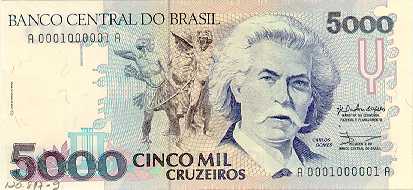
As for the 1990 “Cruzeiro” coins, they were minted in stainless steel, replacing the old aluminum coins that had been in use. The denominations of the coins were 1, 5, 10, and 50 “cruzeiros.” They had different sizes, thicknesses, and designs, allowing for easy identification. The themes depicted on the coins also referred to Brazilian culture and history, with images such as the national coat of arms and representative figures of the country’s fauna and flora. However, despite efforts to stabilize the economy, the new “Cruzeiro” currency was unable to contain inflation. The economic situation continued to deteriorate, and in 1993, it became necessary to create a new currency, the “Cruzeiro Real.”
CRUZEIRO REAL (1993-1994)
The banknotes and coins of the “Cruzeiro Real” in Brazil, launched in 1993, represented an important transition in the country’s monetary history. This period marked a significant change in the Brazilian currency, replacing the “Cruzeiro” with the “Cruzeiro Real” as the monetary unit. The coins of the “Cruzeiro Real” were also introduced during this period. They were made of stainless steel, making them durable and resistant to daily wear. The coins had different sizes and values, allowing for a wide range of cash transactions.
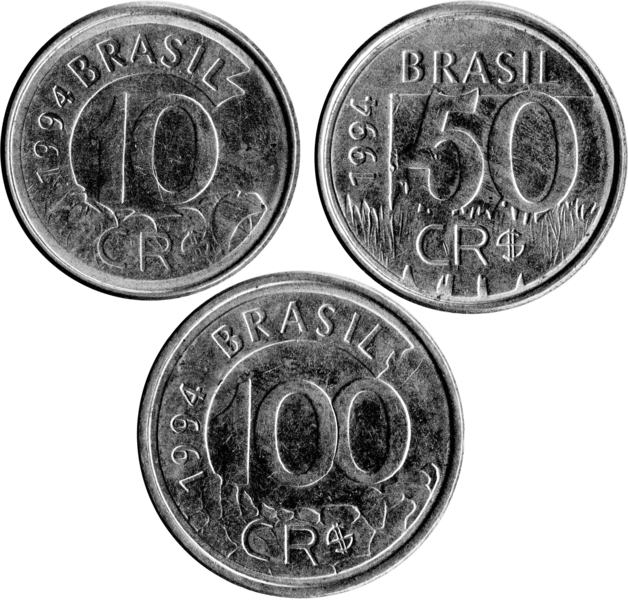
A notable feature of the “Cruzeiro Real” banknotes and coins was the presence of important historical figures from Brazilian history. Personalities such as Getúlio Vargas, Santos Dumont, Marechal Deodoro da Fonseca, and Carlos Gomes were honored, highlighting Brazil’s culture and history. However, in 1994, the “Cruzeiro Real” was replaced by the “Real” as the official currency of Brazil. This change aimed to further enhance the monetary system and consolidate the advancements achieved with the “Plano Real”.
REAL (1994-PRESENT)
Now we have reached Brazil’s current currency. The “Real,” the official currency of Brazil, was introduced in 1994 during the government of President Itamar Franco, with the aim of stabilizing the economy and combating the hyperinflation that plagued the country. The launch of the Real represented a milestone in Brazil’s economic history and brought about a series of changes in the forms of payment used by the population. The introduction of Real banknotes and coins was an important milestone for Brazil’s economic stability. The new currency represented a significant advancement in the fight against uncontrolled inflation, instilling confidence in citizens and investors. Additionally, the Real banknotes and coins became a national symbol, recognized and used throughout the Brazilian territory.
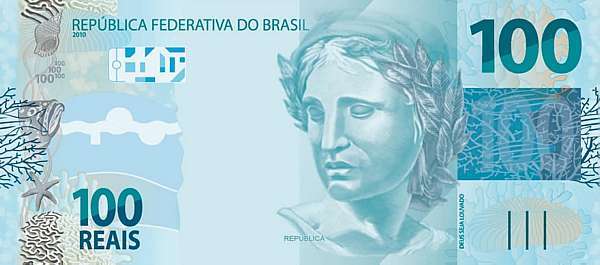
Regarding the coins, the Real was introduced with values of 1, 5, 10, and 50 cents, as well as 1 Real. The coins had different sizes, colors, and materials, facilitating identification and everyday use. Each of them featured elements on their reverse side that represented Brazilian wildlife, such as the hummingbird, jaguar, golden lion tamarin, sea turtle, and Southern Cross.

Matheus Araújo
Matheus Araújo is the founder and editor of Brazilian History. Born in Rio de Janeiro and holding a degree in Advertising and Marketing, his passion for history led him to enroll at the Federal University of the State of Rio de Janeiro, where he is currently pursuing a degree in History Education.
